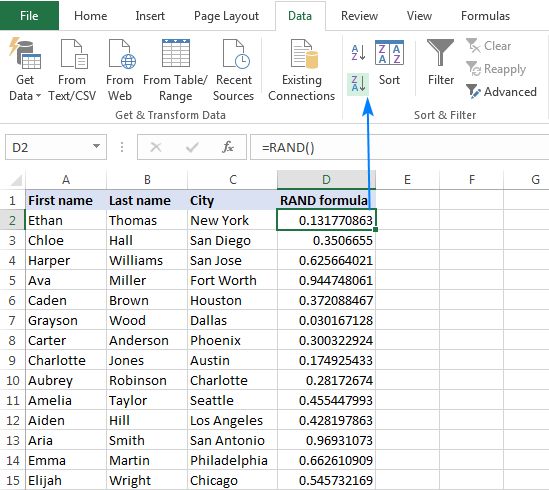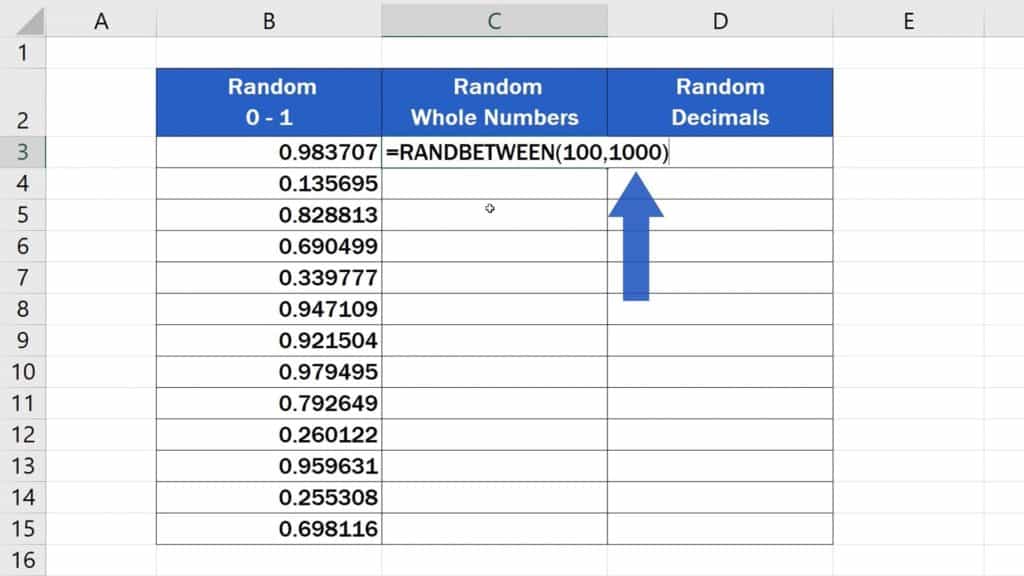

This will place the formula =RAND() in every cell in the range B4:B23.įinally, create column C by putting the following formula in cell C4 and then copying it down (using Ctrl-D as described above) for as many rows as you want elements in the sample. These are generated by entering the Excel function RAND() in cell B4, highlighting the range B4:B23, and pressing Ctrl-D. Column B consists of random numbers between 0 and 1. We accomplish this by creating a worksheet as shown in Figure 3.įigure 3 – Creating a random sample without replacementĬolumn A consists of the data elements in the population (as taken from Figure 1). In fact, it is even easier to create such samples using Real Statistics worksheet functions, as we will demonstrate shortly.Įxample 2: Recreate Group 1 from Example 1 without allowing any duplicates. Sampling w/o Replacement using Excel Functionsīecause of these shortcomings, it is easier to create random samples, with or without replacement, using standard Excel functions. Sampling without replacement is not supported. As you can see from the example, the number 2 is chosen twice in the Group 1 sample. The Label option does not function properly and so should not be used.If in the example above the number of women is not equal to the number of men any blank cells will simply be treated as data and can be chosen for inclusion in a sample.The Sampling data analysis tool has a number of limitations which unfortunately reduces its usefulness. The output is shown in range E7:E9 of Figure 1. The output is shown in the range D7:D12 of Figure 1.įor Group 2 choose B6:B15 as the Input Range and 3 as the Periodic Period for the Sampling Method. This is done by selecting Data > Analysis|Data Analysis, choosing the Sampling data analysis tool, and then filling in the dialog box that appears as shown in Figure 2.įigure 2 – Dialog box for the Sampling data analysis tool For Group 1 you select all 20 population cells as the Input Range and Random as the Sampling Method with 6 as the Random Number of Samples. You need to run the sampling data analysis tool twice, once to create Group 1 and again to create Group 2. ExampleĮxample 1: From a population of 10 women and 10 men as shown in the range A5:B15 of Figure 1, create a random sample of 6 people for Group 1 and a periodic sample consisting of every 3 rd woman for Group 2.įigure 1 – Creating random and periodic samples The output is a column range that contains a sample drawn from the data in the Input Range as described in the Sampling Method. This number of values is drawn from random positions in the input range.

Random – In this case, you need to specify the Random Number of Samples.Sampling stops when the end of the input range is reached. The nth value in the input range and every nth value thereafter is copied to the output column.

Generate random excel data how to#
The tool works by defining the population as a range in an Excel worksheet and then using the following input parameters to determine how to carry out the sampling. Excel Data Analysis ToolĮxcel provides a Sampling data analysis tool that can be used to create samples. We now describe various approaches for generating a random sample in Excel.


 0 kommentar(er)
0 kommentar(er)
